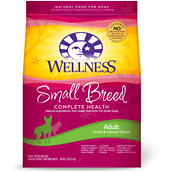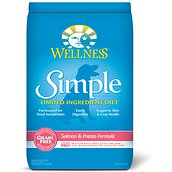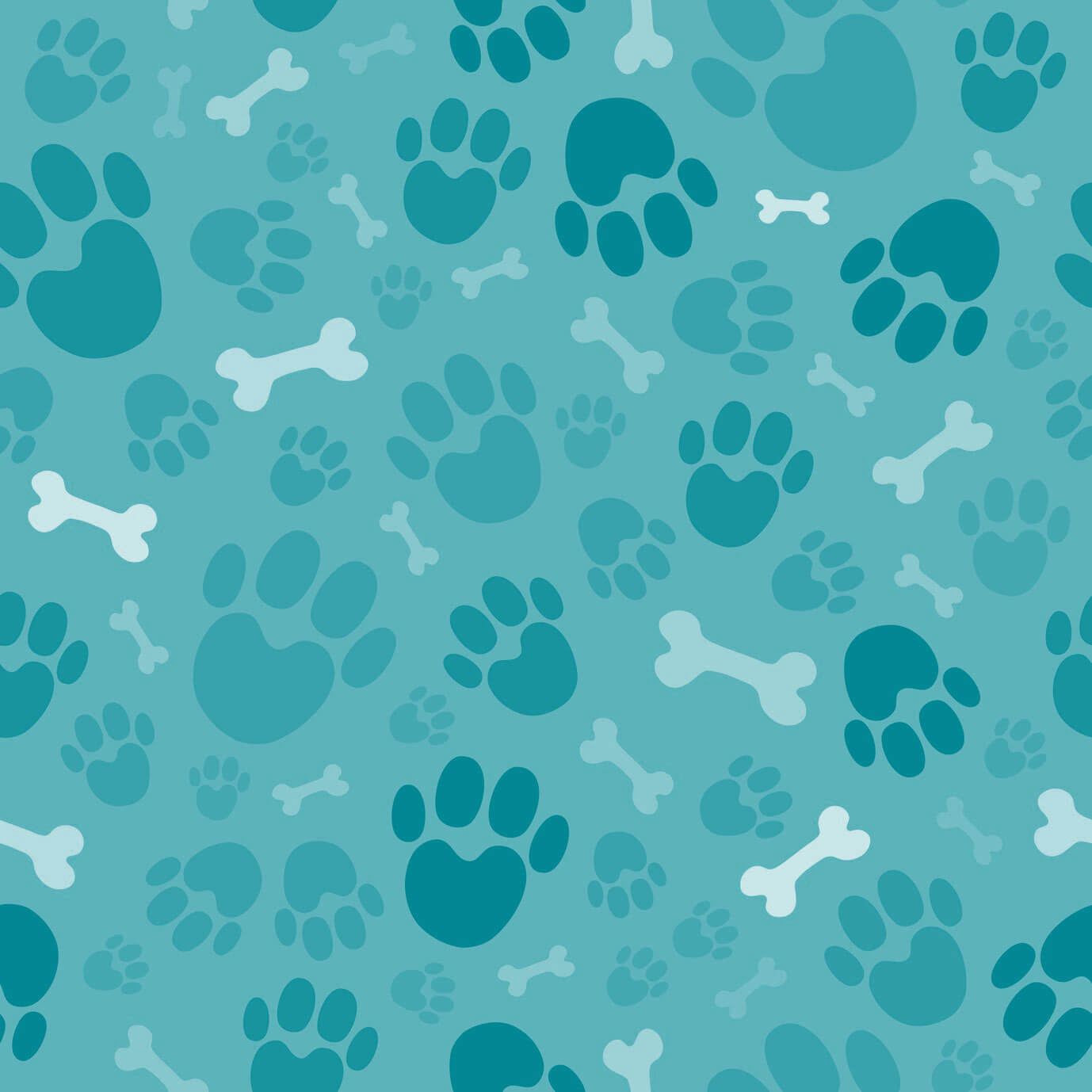Small Breed Dog Food
If you have ever casually looked at small breed dog foods in the pet store or online, you might have the impression that the only difference between them and other dog foods is that they have smaller bites of kibble. However, there are other differences between these foods for small breeds and other dog foods. Toy and small breeds have some unique nutritional requirements and some of the good dog foods made for them address their needs.
Disclosure: Please note that this post contains affiliate links, which will direct you to our partner sites. If you purchase the pet foods we recommend through those links, we may earn a small commission – at no extra cost to you.
How are small breeds different?
Small breeds typically have higher energy requirements, per pound, than larger dogs. For example, a small terrier on the go all the time will use up much more energy than a larger dog who has a more relaxed attitude about life. Even if you have a large dog who has a good run every day, he probably uses his energy in spurts. Smaller dogs have a faster metabolism than larger dogs (in general). Small breeds need more calories in their food.
At the same time, they are small, with small stomachs. They can’t eat large meals. So it’s necessary for their dog food to be more calorie- and nutrient-dense. If you compare the labels of small breed dog foods with those of foods for other dogs, you’ll notice that small breed foods usually have more calories per cup than other foods.
Small dogs can also have a much longer lifespan than larger dogs. The quality of the nutrients in dog food is always important in the food, but it’s particularly important for the long term health of small breeds. The food you feed your small breed dog when he’s 2-5 years old can have an affect on him when he’s 15 years old – or older. The food must have the vitamins and minerals a small breed dog needs for long term health.
Choosing a small breed dog food
With these differences in mind, it’s important to choose a small breed dog food that has more calories and nutrients than ordinary dog food for your small breed. You will need to check the label or the company web site to see how many calories the food has per cup. Sometimes you need to convert between grams and ounces to come up with an answer but you can do this with a little math. Or check web sites that review dog foods to see if they provide the calories per cup figure for you, such as DogFood.guru.
According to the National Research Council, you can figure the daily maintenance energy requirements for your dog using Table 9 on this site. You can use Table 5 to check nutrient requirements and make sure your small breed dog food is meeting them.
The formula used isn’t nearly as mysterious as it may seem. This formula can be used for animals of any weight: (RER = 70 [body wt in kg0.75])
To use the formula you would multiply 70 x (your dog’s body weight in kilograms raised to the ¾ power). If you use a calculator, you can do this very easily.
To change weight from pounds to kilograms, simply divide by 2.2. Or you can use a convenient web site. There are lots of them online.
Once you know your dog’s RER (resting energy rate), you can simply apply what ever factor you need to get his particular calorie requirements. You can use the table below to find the correct factors.
For example, the RER for a 10kg (22lb) adult dog of healthy weight is 70(10kg)3/4. For a weight loss diet you would multiply that number by 1.0 and feed 394 Calories/day. However, a neutered dog of the same weight would use this formula: RER = 1.6 x 70(10kg) ¾. An adult dog that was not neutered, with a normal activity level, would use RER = 1.8 x 70(10kg)¾.
| Known life stages and corresponding factors used to estimate daily energy needs for dogs. | |
| Neutered adult | =1.6 x RER |
| Intact adult | =1.8 x RER |
| Inactive/obese prone | =1.2-1.4 x RER |
| Weight loss | =1.0 x RER for ideal weight |
| Weight gain | =1.2-1.8 x RER for ideal weight |
| Active, working dogs | =2.0-5.0 x RER |
| Puppy 0-4 months | =3.0 x RER |
| Puppy 4 months to adult | = 2.0 x RER |
Using these factors you can figure out how much your small breed dog needs to eat. Remember that the results you get will be calories per day. Small breed dogs need to eat at least two meals per day and it’s often better to feed them three meals per day. They are small and they can’t eat much food in one meal. Divide the calorie amount you arrive at into the number of meals you need to feed your small dog per day to determine how many calories to feed per meal.
Check to make sure that the small breed food you are considering can provide enough calories per meal to sustain your dog and meet his caloric and nutrient needs.
Ingredients
Your small dog’s food should include plenty of good quality protein. Although he needs extra calories, you do not want all of the calories to come from lots of fat and carbs. The food should have good sources of meat protein. Most experts advise that a good dog food will have a couple of named meat proteins in the first five ingredients.
Fat is important to small dogs, including important fatty acids for healthy skin and coat. Make sure the food has omega-3, preferably from marine sources as well as plant sources, and omega-6 fatty acids. Fat will also supply energy to your small dog but it needs to be a named fat such as chicken fat and not something vague such as poultry fat. Fat is also important in your dog’s diet as a way of distributing fat-soluble vitamins.
Grains or grain free is up to you. If you have a toy dog then you will want to pay special attention to the glycemic values of the grains or carbs in the food. Many toy dogs can have problems with blood glucose levels which rise and fall rapidly, especially between meals. Make sure that the food contains some grains or carbs that are slow to digest to help offset this problem. Oats and some other grains digest slowly and will help allay problems with hypoglycemia. Moderate to high fiber diets can also be a good choice if your dog has problems with hypoglycemia.
If you have a toy breed who has problems with his blood sugar, especially as a puppy, the best thing you can do is to add an extra meal and some snacks during the day. It’s important to keep the blood sugar level as steady as possible so he won’t have highs and lows. Many puppies outgrow this problem as they get older and gain some weight.
You may also want to look for ingredients such as fruits and antioxidants in your small dog’s food. These ingredients can have beneficial effects for any dog, including small dogs.
Top Recommended Foods For Small Breeds
Some of the brands of small dog food we like, from what we have noted in reading labels, include (in no particular order):
| Best Dog Food For Small Dogs 2021 | ||
| #1 | #2 | #3 |
 |
 |
 |
| Wellness Complete Health Small Breed Where To BuyRead Reviews |
Wellness Simple Grain-Free Where To BuyRead Reviews |
Blue Buffalo Life Protection Small Breed Where To BuyRead Reviews |
These are just a few foods that we like based on some of their ingredients, calories, and things we have heard from dog owners. You may have other preferences. You can try some foods and see how your small dogs likes them. Buy small sized bags at first until you find out if your dog likes them and if he does well on them. As always, watch to see if your dog loses or gains weight when you follow the feeding guidelines. Observe his skin and coat. See if his energy level is what it should be. And always check your dog’s stool, especially when you change foods. It’s not unusual for a dog to have some loose stool when you first change food, even if you change food slowly. But the stool should be small and compact after a few days if your dog is digesting it well.
A lot of dog in a small package
Many small dogs are just that: a lot of dogs in a small package. They are active and full of life, especially for such small dogs. Their food does need to have extra calories and the right amount of nutrients to meet their needs. Be sure to check the labels or the company web sites when you are considering a small breed dog food. There are lots of good dog foods for small breeds but you do need to examine them to make sure they have the calories and ingredients you want for your dog. Follow the suggested feeding guidelines or use the formula provided here to determine how many calories per day your small dog needs, then divide his food up into at least two meals per day. Three meals are often better, especially if you have a toy breed.
Small dogs are special so give them the best food for their needs.









My 11 year old 6 lb female chihuahua was left to me and I love her
She gets Fromm Adult breed small dog kibble and eats very well
She was given to me after the death of the old man with Cesar trays
I know that is no good
Who makes a good brand in trays for a small old dog?
I give her 1/4 cup a day. 2x a day.is that correct?
I appreciate your help as with the man dead I could not let her go to the Humane society at 11 years of age
I am 83 and we are doing fine together
i have a 7 pound yorkie about 10 yrs. old. i got her from a shelter almost dead. he has a enlarged heart and not fixed. i feed her home food. he loves it but i,m 83 and it,s getting to much for me. which food would be the best for my wonderful guy.
I just got a 6 week old female chihuahua puppy. Her prior environment was not ideal for raising a healthy dog. What I need help with is puppy food brands that will that will help her get what she needs since she was weaned from her mother (my opinion) a little early. I’ve decided first thing no people food;. This is the first time that I’ve had a small dog and I know healthy eating is crucial for maintaining a good weight.Can you help with a list of brands? I bought Rachael Ray’s products and she seems happy with that but I think a dry food would be best for now.
Thank you.